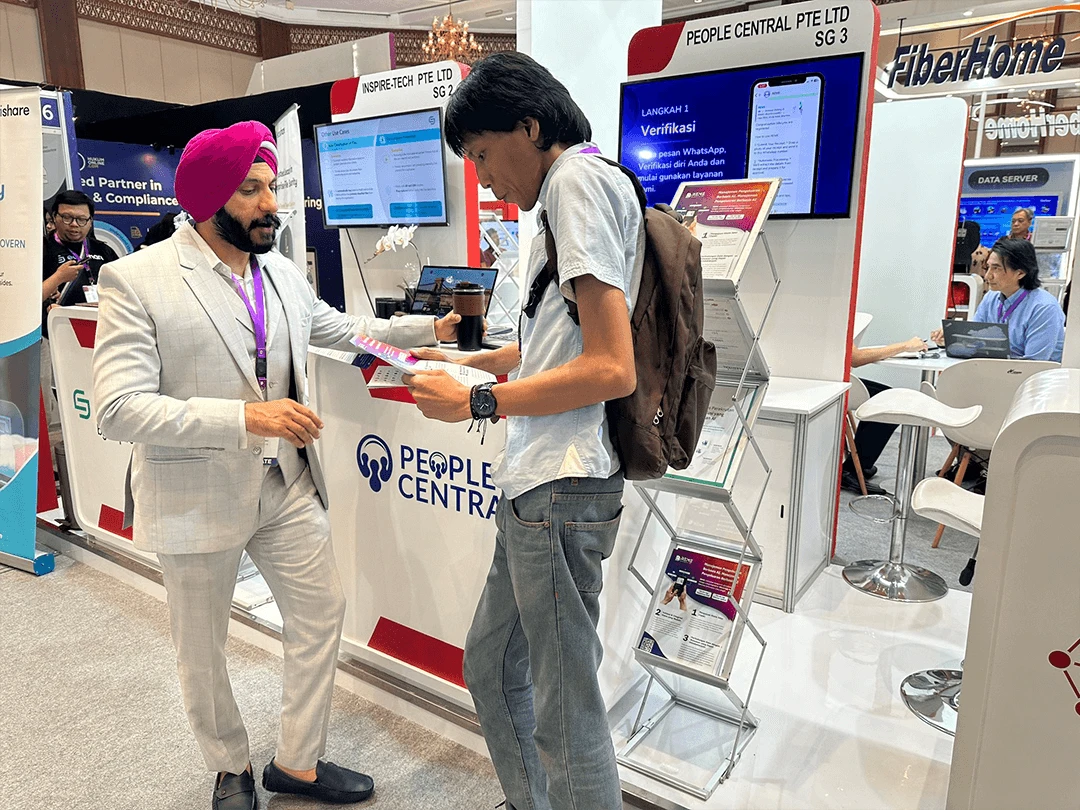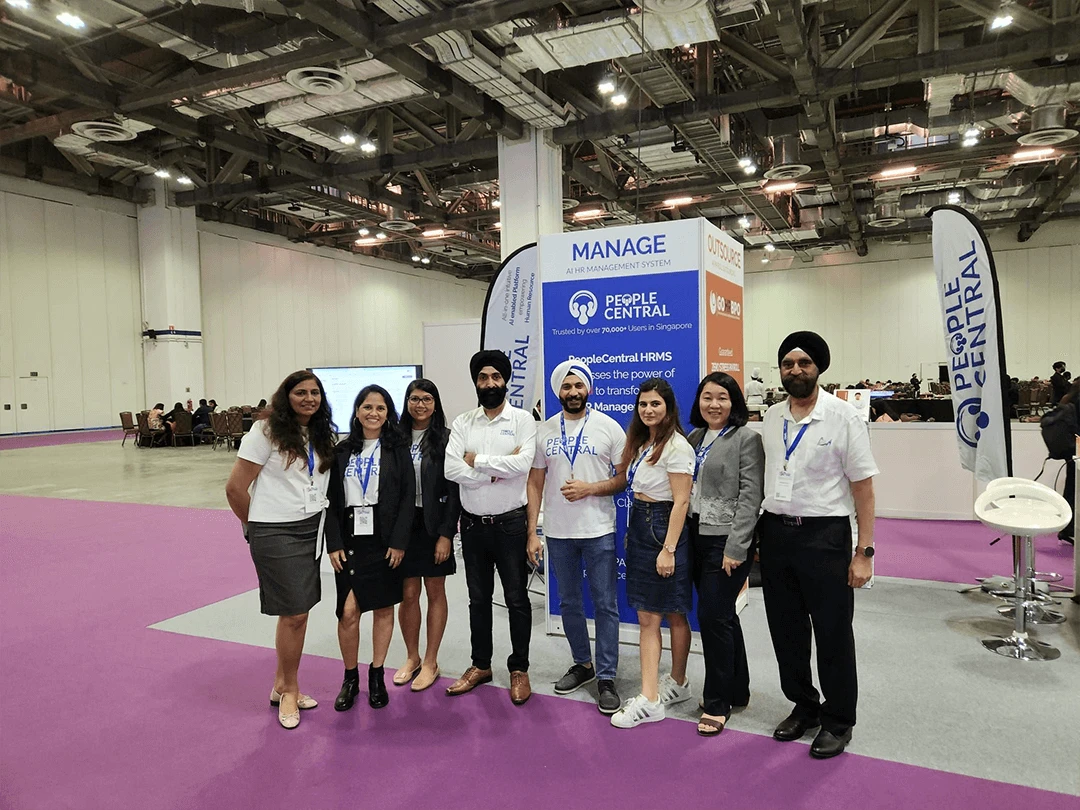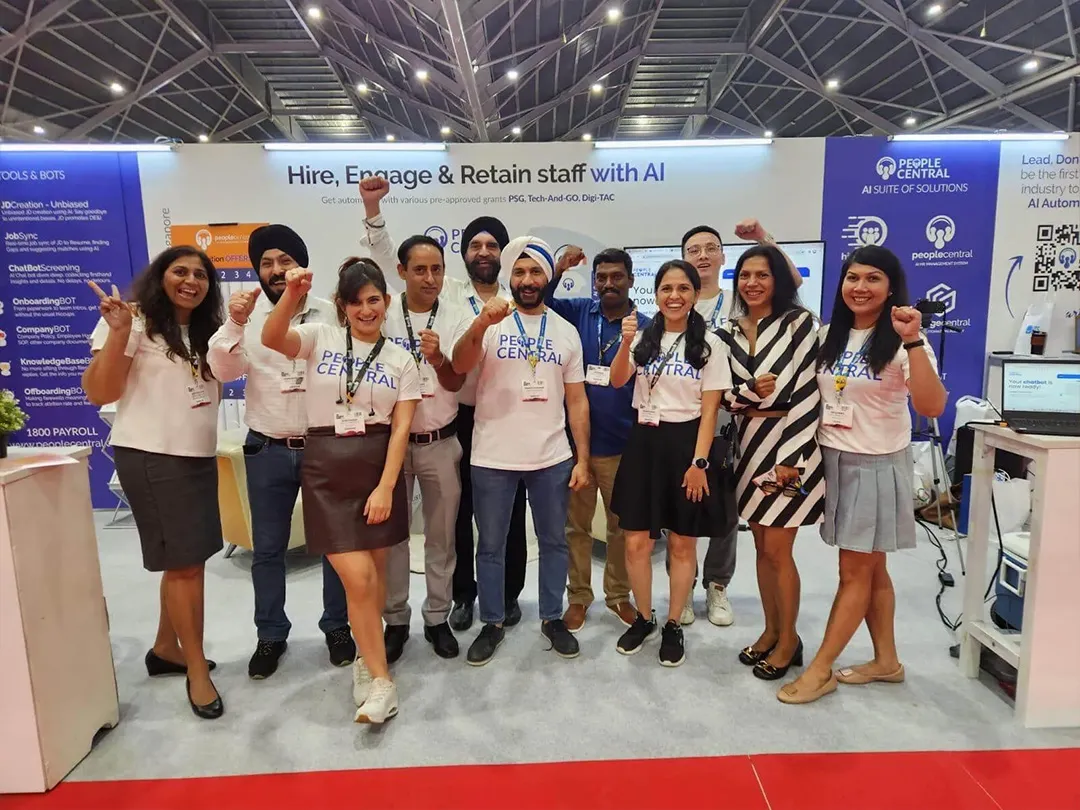Say hello to AI-driven chatbots and virtual assistants, the new revolutionary players in Human Resource Management Systems! With natural language processing capabilities, these entities can understand and respond to your queries, helping you with all HR-related tasks.
The benefits? Employees can access info anytime, without relying on manual assistance. Plus, these AI-driven tools can collect valuable data about preferences and concerns.
For HR professionals, chatbots and virtual assistants take care of repetitive admin tasks, freeing up time. According to a Gartner report, the adoption of AI-driven chatbots is projected to increase by 45% in two years.
As technology evolves, chatbots and virtual assistants are becoming increasingly vital in HRMS. This seamless integration not only improves efficiency but also enhances the employee experience.
Understanding Chatbots and Virtual Assistants
Chatbots and virtual assistants revolutionize HRMS with Artificial Intelligence. Benefits? Streamlined processes and enhanced employee experiences!
- Improved Communication: Chatbots and virtual assistants swiftly answer employee queries in real-time. No need for tedious back-and-forth.
- 24/7 Support: Chatbots and virtual assistants are available round the clock. Employees can seek assistance or access information anytime.
- Automated Tasks: Program chatbots and virtual assistants to handle repetitive tasks such as leave requests or onboarding processes.
- Personalized Experiences: AI algorithms provide personalized experiences tailored to each employee’s needs, leading to higher satisfaction and engagement.
- Data Analytics: Collect data during interactions with employees, enabling HR departments to derive insights into trends, preferences, and areas for improvement.
Plus, they use machine learning to adapt over time. Natural language processing ensures accurate responses to even complex queries.
Pro Tip: Regularly update knowledge base with frequently asked questions and relevant information for maximum effectiveness of chatbots and virtual assistants in HRMS. Enjoy a page-turning thriller experience minus the suspense of waiting for a response!
Benefits of Chatbots and Virtual Assistants in HRMS
Chatbots and virtual assistants are a great asset to HRMS, transforming the way HR operates. Let’s have a look at their advantages:
- Enhanced User Experience: Quick responses to employee queries, saving time and effort.
- Efficient Employee Onboarding: Streamlining the onboarding process, helping new hires with information and documents.
- 24/7 Support: AI-powered assistance available non-stop, providing support to employees anytime.
- Data Analytics: Collecting data on employee interactions, enabling HR departments to make decisions based on analytics.
Plus, chatbots can assist with performance management with real-time feedback.
In conclusion, chatbots and virtual assistants in HRMS make HR tasks simpler and improve productivity.
Pro Tip: Implementing and maintaining chatbots or virtual assistants in HRMS is key for optimal performance. HRMS just got smarter with AI! Chatbots and virtual assistants make things easier for HR and employee inquiries will be heard. All hail AI!
How Chatbots and Virtual Assistants Work in HRMS
Chatbots and virtual assistants are AI-powered tools used in HRMS to automate tasks. They use natural language processing (NLP) and machine learning algorithms. These bots can handle various HR functions like answering employee inquiries, helping with onboarding, and managing leaves and surveys.
| Function | Process |
| Employee Self-Service | Letting employees access the HR system to view payslips, update personal information, submit leave requests, etc. |
| Real-time Communication | Allowing HR teams and employees to communicate via chat interfaces embedded in the HRMS platform. |
| Data Extraction | Extracting relevant employee data stored within the HRMS for providing accurate answers. |
| Workflow Automation | Automating repetitive tasks like leave request approvals or processing payrolls by connecting to HRMS databases. |
| Response Personalization | Analyzing individual contexts, identifying patterns, learning preferences to offer personalized solutions. |
Chatbots can learn and adapt based on user interactions. This enables businesses to give employees a better experience while reducing manual interventions. Additionally, these AI-powered tools are efficient, handling queries 24/7 with no delays or errors. Organizations using chatbots have reported increased productivity and cost savings.
HRMS now has chatbots and virtual assistants, providing employees with a much-needed break from talking to their mood-swinging HR managers.
Examples of Chatbots and Virtual Assistants in HRMS
Chatbots and virtual assistants have become essential tools in HRMS, thanks to the advancements of AI technology. These intelligent entities provide personalized assistance to various HR processes, boosting productivity and user experience.
To show the applications of chatbots and virtual assistants in HRMS, some real-life examples include:
| Chatbot/Virtual Assistant | Procedure |
|---|---|
| Onboarding Bot | Guides new employees through onboarding, providing information about policies, procedures, and documents. It also handles repetitive tasks like form filling and document submission. |
| Leave Management Assistant | Automates the leave management process, allowing employees to request leaves through chat. It also provides real-time updates on leave balances and notifies managers for approval or rejection. |
| Employee Lookup Bot | AI-powered bot enables HR personnel to quickly access employee information without navigating complex HR systems or databases. |
| Training Scheduler Assistant | Assists in scheduling training sessions with reminders, attendance tracking, and feedback collection. |
These examples prove how chatbots and virtual assistants bring convenience and efficiency to HRMS. With sentiment analysis integration, these AI-powered assistants can detect emotions and respond accordingly.
Pro Tip: Keep chatbots and virtual assistants updated with regulations and organizational requirements for optimal performance.
AI-driven chatbots and virtual assistants can bring numerous benefits to HRMS, such as improved efficiency, reduced admin burden, and enhanced employee satisfaction.
Potential Challenges and Considerations
Integrating chatbots and virtual assistants into HRMS brings potential challenges and considerations. To maximize effectiveness and efficiency, these need to be addressed.
Let’s look at a table showing aspects to consider:
| Challenge/Consideration | Description |
|---|---|
| Data Security | Protecting confidential data. |
| Training and Development | Training HR staff on AI technologies. |
| User Acceptance | Ensuring employees accept chatbots. |
| Integration with Systems | Integrating chatbots with existing HR systems. |
| Language Understanding | Accurately understanding user queries in different languages. |
Another consideration is the need for monitoring and updates. This includes analyzing user feedback, finding areas for improvement, and implementing updates.
AI-powered chatbots and virtual assistants are revolutionizing HR management. Gartner Research shows that by 2022, 70% of employee interactions will involve conversational platforms.
Get ready for a future where chatbots and virtual assistants take over HR departments, giving HR professionals more time for Netflix!
Future Outlook and Trends in Chatbots and Virtual Assistants in HRMS
Chatbots and virtual assistants in HRMS are revolutionizing the way organizations manage their human resources. Here are some of the emerging trends to consider:
| Automation of HR processes | Streamline routine HR tasks, such as leave applications and benefits enrollment. Free up HR professionals to focus on strategic initiatives. |
| Enhanced employee experiences | Personalized interactions, bots offer employees instant support, generating higher levels of engagement and satisfaction. |
| Data-driven decision making | AI-powered bots can collect and analyze employee data, allowing HR departments to make informed decisions. |
| Integration with existing systems | Seamless integration between chatbots/virtual assistants and existing HRMS platforms. |
| Voice recognition capabilities | Enables employees to interact with chatbots using natural language. |
These advancements will lead to smarter chatbots that can understand complex queries. An example of this is a multinational that implemented a chatbot in their HRMS system to handle employee inquiries. It was a success, as employees praised the bot for its efficiency and HR professionals rejoiced at the reduction in repetitive tasks.
Even though virtual assistants won’t bring you coffee like a human HR manager, at least they won’t drink it all either!
How can AI-powered chatbots and virtual assistants enhance your HRMS experience?
Discover the benefits of using PeopleCentral’s HRMS Solution:
- Seamless employee self-service through chatbots
- Automated responses for common HR queries
- Streamlined onboarding and offboarding processes
- Efficient leave management and attendance tracking
- Personalized employee engagement and recognition
- Enhanced data analytics and insights
- Improve HR efficiency and productivity
Experience the power of AI in HRMS with PeopleCentral.
Conclusion
In the modern, fast-paced world, AI-powered chatbots and virtual assistants have become a necessary part of HRMS. These systems help streamline HR processes, improve employee experiences, and boost operational efficiencies.
Chatbots and virtual assistants can take on repetitive tasks like answering employee questions, handling leave requests, and updating employee info. This allows HR professionals to focus on initiatives that promote organizational growth.
Integrating these tools into HRMS is easy. They integrate smoothly with existing technologies and systems, without disrupting workflows or requiring long training sessions. Moreover, they learn from user interactions and get better at providing accurate answers over time.
Plus, they can analyze data and provide actionable insights to HR teams. For instance, they can spot patterns in employee behavior, forecast attrition, and suggest personalized development plans.
Gartner’s 2020 study predicts that by 2022, more than 70% of customer interactions will involve emerging technologies such as chatbots or virtual customer assistants.
FAQs
Ques 1. What are chatbots and virtual assistants?
Ans 1. Chatbots and virtual assistants are AI-powered technologies that simulate human conversation to interact with users and provide assistance.
Ques 2. How can chatbots and virtual assistants be used in HRMS?
Ans 2. Chatbots and virtual assistants in HRMS can automate various HR tasks such as answering employee queries, managing leave requests, and providing onboarding support.
Ques 3. What are the benefits of using chatbots and virtual assistants in HRMS?
Ans 3. The benefits of using chatbots and virtual assistants in HRMS include improved efficiency, faster response time, reduced workload for HR staff, enhanced employee experience, and 24/7 availability.
Ques 4. Can chatbots and virtual assistants replace human HR personnel?
Ans 4. While chatbots and virtual assistants can automate routine tasks, they cannot replace the expertise and human touch provided by HR personnel. They can work alongside HR teams to streamline processes and improve efficiency.
Ques 5. Are chatbots and virtual assistants capable of handling sensitive HR data?
Ans 5. Yes, chatbots and virtual assistants can handle sensitive HR data securely. They are built with robust security measures and adhere to data privacy regulations.
Ques 6. How can employees interact with chatbots and virtual assistants in HRMS?
Ans 6. Employees can interact with chatbots and virtual assistants in HRMS through various channels such as messaging platforms, websites, mobile apps, or voice-enabled devices.








 5
5


























